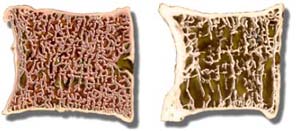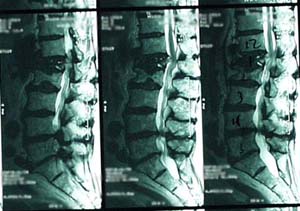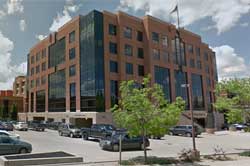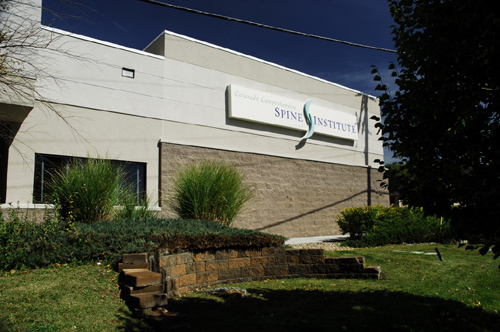Locations

Fax: (303) 762-9292

Explaining Spinal Disorders: Vertebral Compression Fractures
A vertebral compression fracture occurs when a vertebral body collapses. Often, the cause is related to osteoporosis, a metabolic disease leading to loss of bone density that increases the risk of fracture. Osteoporosis can make a minor fall or simple bending and lifting movements traumatic. Compression fractures and other spinal fractures can also be caused by certain types of cancer or tumors, although this is not common.

Compression fractures affect thousands of Americans every year. Many people do not realize sudden and intense back pain may be a sign of a compression fracture. Or, they assume their symptoms are just part of growing older. Whether painful or not, compression fractures can lead to additional fractures, spinal deformity, and loss of the ability to function.
Symptoms
In addition to pain, other signs and symptoms include:
- Loss if height (one of the reasons many older people seem to shrink as they age)
- Kyphosis (or humpback)
- Loss of balance (which increases the risk of falling)
- Neurological symptoms such as numbness, tingling, or weakness (which increases the risks of falling and breaking other bones)
Diagnosis
Our comprehensive diagnostic process includes:
- Medical history. Your doctor will talk to you about your symptoms, their severity, and what treatments you have already tried.
- Physical examination. You are carefully examined for movement limitations, balance problems, and pain. During the exam, the doctor will evaluate loss of extremity reflexes, muscle weakness, loss of sensation, or other signs of a neurological problem.
- Diagnostic tests. X-ray is a common test that can quickly show if a vertebra is fractured. If there is concern about spinal cord damage, a CT scan or myelography is performed. Myelography involves injecting contrast dye into the spinal column to visually enhance the spinal cord and nerve roots.

Above: MRI view of an L1 compression fracture; shown as a black voice of bone. There is severe pressure on the spinal cord; the dark grey ribbon-like vertical structure surrounded by white. Note the dumbbell shape of L2. This suggests L2 is an old compression fracture.
Nonsurgical Treatment
Most compression fractures can be treated with pain-relieving medication, activity modification, and bracing. Osteoporotic patients, who are not taking medication to control osteoporosis, may be prescribed a drug and supplement regimen to prevent disease progression.
Bracing limits fracture movement and immobilizes the spinal region affected. While braces are not always comfortable or fashion-forward, bracing can help reduce pain. Brace use is discontinued when x-rays show the fracture is stable and healed.
Surgical Treatment
Vertebroplasty and kyphoplasty are minimally invasive surgical procedures performed to treat vertebral compression fractures. Sometimes, treatment involves spinal instrumentation and fusion.
Vertebroplasty and kyphoplasty are similar, but distinct procedures. Both procedures involve injecting orthopaedic cement into the fracture. A primary difference between these procedures is kyphoplasty uses a balloon, which is inflated, to create a cavity for the orthopaedic cement. Kyphoplasty can help restore lost vertebral body height caused by the collapse of a compression fracture. This may also help to correct kyphosis, or contour mal-alignment that often accompanies a thoracic compression fracture.
A severe compression fracture may require spinal instrumentation and fusion, as well as decompression of the spinal cord. Instrumentation (i.e. screws, rods) and fusion (bone graft) joins two or more vertebrae together, stops movement, and stabilizes the spine.
Your surgeon will recommend the best procedure for you and explain the benefits and risks.
Recovery and Prevention
If you require a surgical procedure, you may be hospitalized overnight, or a few days. The length of hospitalization depends on the severity of the fracture and the procedure performed. Some kyphoplasty procedures are now performed as outpatient treatment.
Upon hospital discharge, you will be provided with written instructions for home care. You may have pain after your procedure and your doctor will provide pain medication to keep you comfortable. At home, you need to continue to rest. You are given instructions how to safely and gradually increase activity.









